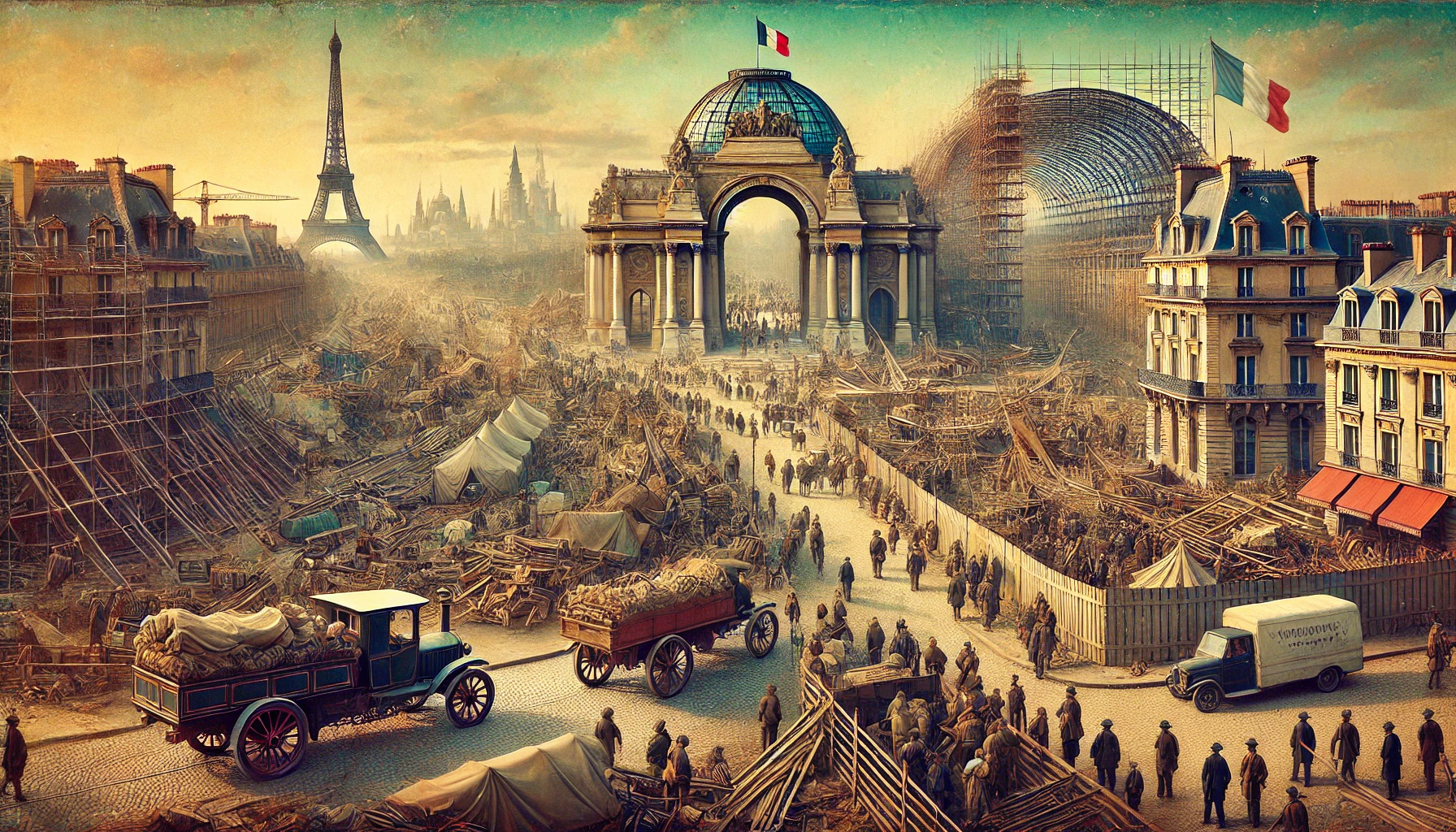Chapter 24 — Changing Paris
byChapter 24 – Changing Paris presents a city caught in a moment of transition, where its physical and social structures are being reshaped ahead of the 1900 Exhibition. Iconic landmarks like the Palais de l’Industrie, once a stage for elegant gatherings and major exhibitions, are being torn down. In its place, a grand avenue will stretch from the Champs Elysées to the Esplanade des Invalides, drawing a visual line to Napoleon’s tomb—a deliberate nod to legacy amid change. Yet this act of honoring history also erases part of it, reminding Parisians that permanence is an illusion. Even the most treasured buildings, once thought untouchable, are made temporary by time and progress. As the city prepares to welcome the world, it seems willing to rewrite its landscape for spectacle.
The grandeur of the past is remembered not only in buildings but in people—like Empress Eugénie, whose opulent attire at past exhibitions symbolized an age of splendor. Her fashion, detailed in contrast to Queen Victoria’s austere dress, underscored the cultural theater of imperial Paris. But those costumes and courtly traditions now seem like remnants from a fading performance. What once dazzled has become irrelevant to modern sensibilities, replaced by functionality and republican values. The narrative mourns this lost elegance, not in bitterness, but in wistful recognition of how cities evolve away from their ceremonial selves. In these changing times, Paris feels like a stage where new actors perform to different scripts, less ornate but perhaps more inclusive.
Chapter 24 – Changing Paris also explores shifting social dynamics, especially between the aristocracy and the republican state. Former elites no longer command the power they once did, yet they continue to protest their decline through gestures like the royalist demonstrations at the funerals of the Duchesse d’Alençon and Duc d’Aumale. These events serve as symbolic resistance—an echo of a class unwilling to vanish quietly. Despite their theatrics, the aristocracy’s political relevance has dwindled, leaving their actions more nostalgic than threatening. Still, their presence in public life serves as a reminder of how history lingers, even when institutions move on. The narrative reveals a city negotiating the ghosts of its past while trying to define a new civic identity.
Paris is not only transforming socially—it is undergoing a technological upheaval that reshapes its infrastructure and urban rhythm. Electric trams and new railway lines are replacing quieter, slower streets. Discussions around elevated railways spark public debate, with many fearing they’ll ruin the city’s iconic aesthetic. But the city council, more radical than before, pushes forward in favor of efficiency and modernization. This marks a decisive turn: Paris is becoming a city driven by progress rather than preservation. The future arrives on steel tracks, and beauty is increasingly measured by function rather than tradition. In this shift, old neighborhoods lose their charm, but gain access and convenience—a trade-off that reflects global urban trends.
Chapter 24 – Changing Paris notes that the public’s attitude toward the aristocracy is one of indifference more than disdain. No longer feared as political agitators, the nobility is seen more as anachronistic figures clinging to a status that no longer holds institutional weight. Meanwhile, the general public is increasingly pragmatic, focused on the benefits of improved transport, sanitation, and civic planning. Though occasional protests stir emotion, they do little to reverse the tide of republican governance. Power has shifted from lineage to legislation, and with that, the social hierarchy flattens. Still, traces of the old order persist—in ceremonies, in architecture, and in whispered tales of court life. These fragments, while fading, lend Paris a layered character few cities can claim.
This moment in Parisian history offers valuable insight into how urban identity is formed and reformed through time. As the 1900 Exhibition approaches, Paris becomes a model of transformation, balancing modern innovation with historical memory. While buildings fall and social roles evolve, the city continues to enchant—less as a museum of past grandeur, and more as a canvas for emerging ideas. For readers today, it offers a case study in resilience and reinvention, reminding us that cities must adapt to thrive. The friction between old and new, style and substance, isn’t a flaw—it’s what gives cities their soul. In the tension between remembrance and progress, Paris writes its next chapter with conviction, not hesitation.


